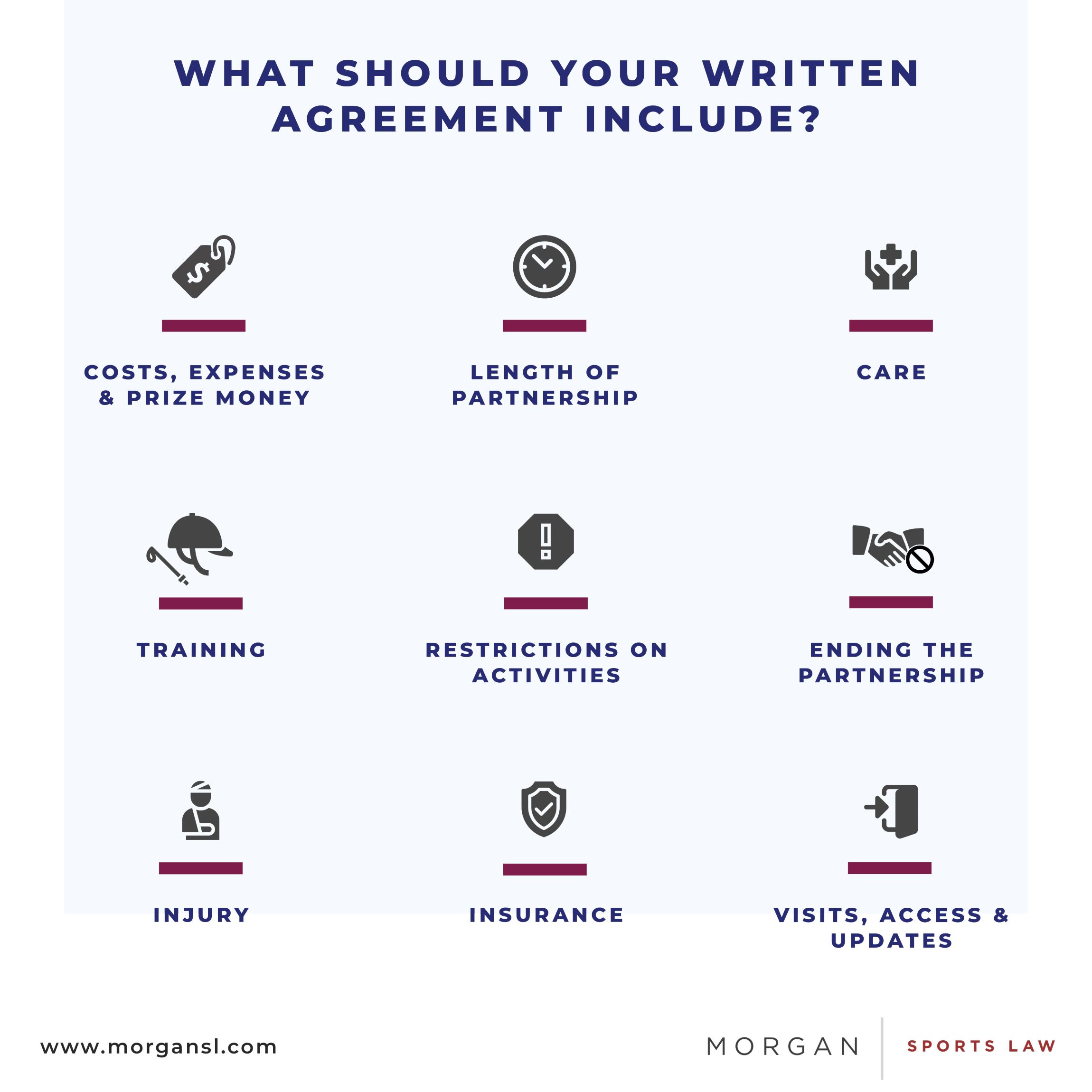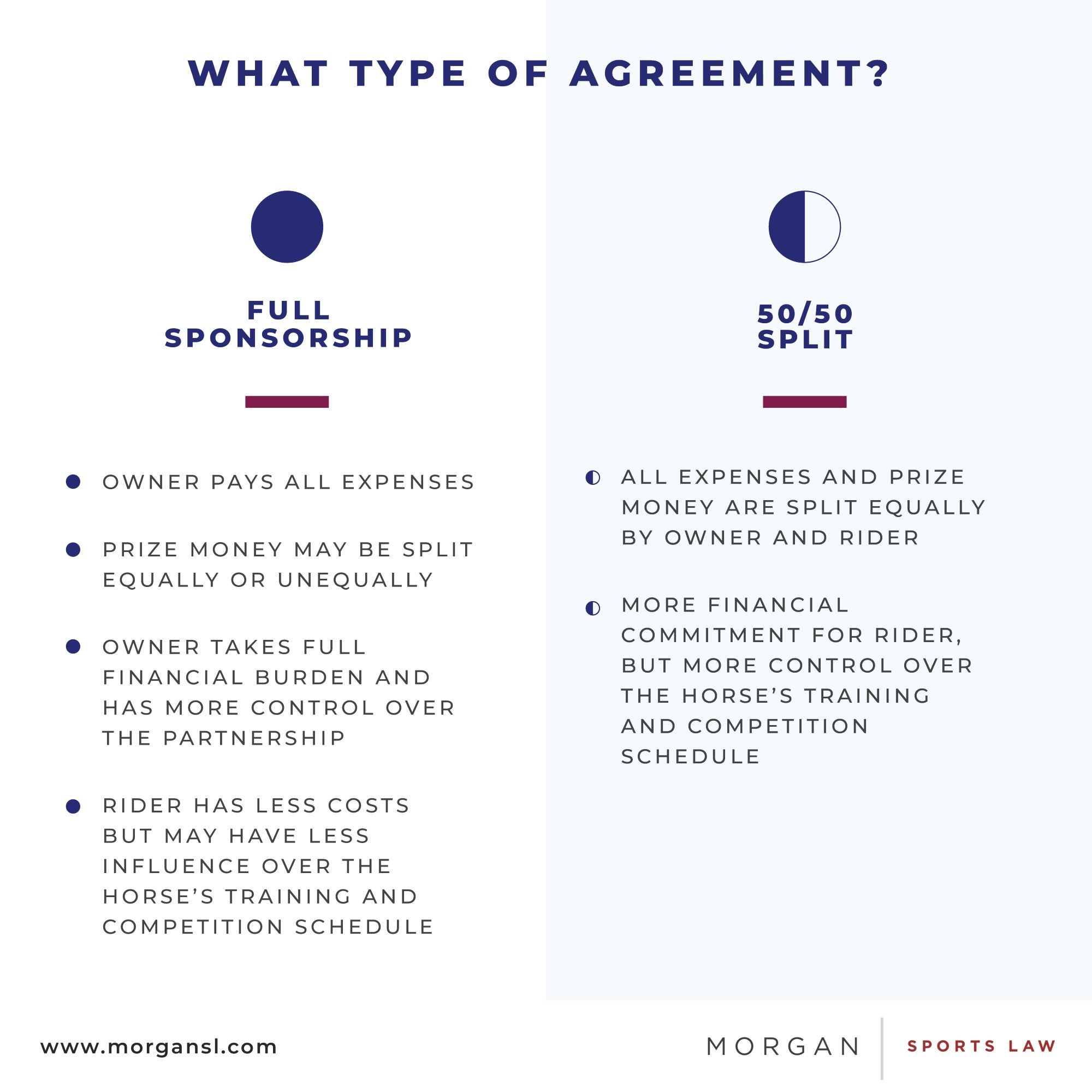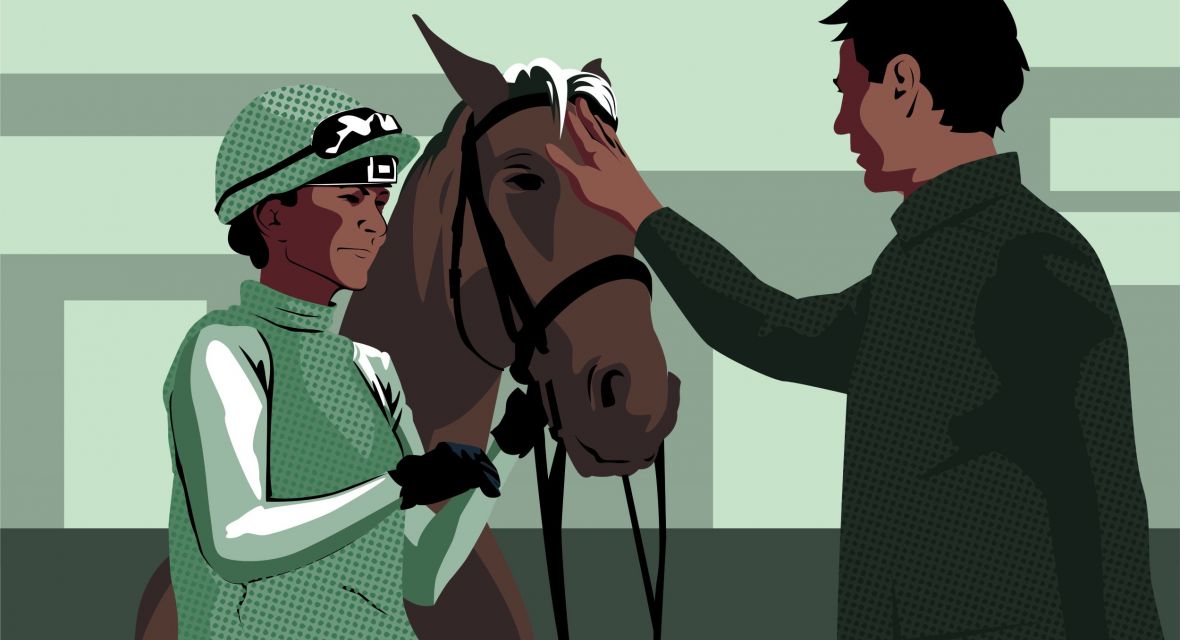The key to a good owner/rider partnership
Owner/rider partnerships can be beneficial to both the owner and the rider. For the rider, it is a good opportunity to train and compete with a high-performance horse without upfront costs – and it typically comes with support from an experienced benefactor. It can also be very rewarding for owners to watch a rider develop and prosper with their support. From a more practical perspective, it is a good way for the owner to keep the horse fit, and to reap the rewards of the horse’s winnings with minimal input. You can read more about the benefits in our first article on owner/rider agreements here.
But there are, of course, risks on both sides of the table – and riders and owners can face complicated issues later down the line if clear conditions are not set at the beginning of the relationship about matters such as the level of care, permitted activities and liability for expenses.
The owner and rider must carefully consider what they want from the relationship and agree to terms and conditions through a written agreement, before the rider starts to train or compete with the horse.
In this article, we set out a few tips to help you start your relationship off on the right hoof(!).

Costs, expenses and prize money: Horses incur all kinds of different costs, such as livery, food, medication, veterinary care and grooming, not to mention the expense of travelling to and entering shows. On the flip side, competing can be lucrative and top performing horses can generate considerable sums in prize money each year. One of the most important things that the owner and rider must agree is how to split the prize money and expenses. This must be set out clearly in their agreement. The most common types of agreement are full sponsorship and 50/50 split:
Full sponsorship: This is where the owner pays the full cost of the horse. For many owners, a full sponsorship is enticing because it guarantees a certain aspect of control. Since the owner is paying for the entire cost of the horse, the owner can have the final say of who can ride the horse, where the horse can show, and how the horse is cared for. This type of partnership is also beneficial for riders because it fully alleviates the financial burden that is associated with competing in top sport. However, it is important for riders to set specific terms of the agreement before entering into a full sponsorship to prevent the owner from taking the horse away at any given moment. For example, must the rider get permission before incurring expenses?
50/50 split: In this type of agreement, every cost (e.g. vet bills, shipping and show bills) will be split equally between owner and rider, which lightens the economic strain for both parties. Prize money is also split 50/50. This type of agreement is very common because it gives each partner half of the control in the agreement. For example, sometimes, owners do not have the knowledge that riders have, and they disagree on the care and training the horse should get. But with a 50/50 agreement, riders can exert more influence on the training program because of their personal stake in the investment. As with any split, it is important to ensure you have put every aspect of the agreement into writing so there are no disputes later on about who gets what and who has control over what.
These are the most common types of agreement but any split is possible so you should think about what is best for you both. For example, if the rider is particularly experienced or has put considerable work into developing the horse, they may receive a higher percentage of the prize money.
There can be a tendency to tiptoe around financial points, but it is vital to think about this at the very beginning, and get it formalised in your agreement so there are no arguments about it later on.

Length of partnership: Every agreement should state how long the rider will have the horse for. It could be a couple of months, a few years, or it could even be open-ended. It may be sensible to start with a short contract or probation period to see how the rider and horse get on, before embarking on a long-term agreement.
Care: One of the biggest worries for owners is not being in full control over how the horse is cared for. As a rider, you know how to look after horses, but it is always best to discuss the care expectations with the owner so that you know you are on the same page. The agreement could be as specific as the owner and rider want, with anything from “the horse is checked by a vet every six weeks” to “the horse receives quality care”.
Training: it is very important, particularly if a horse is competing, that it receives the expected level of training. You will want to agree at the beginning who the trainer is and maybe even the specific training regime, so you are both happy and know what the expectations and goals are.
Restrictions on activities: This is your opportunity to outline anything you would like to restrict, such as how often the horse is ridden, how many shows are entered, which riders can and can’t ride the horse, whether the horse can be involved with breeding (and conditions surrounding this). Think about what is important to you and get it formalised in the agreement so you both know what is acceptable.
Ending the partnership: No matter if the agreement is a few months or open-ended, you will want to be clear about how the relationship can be terminated. This gives security to both the owner and the rider, and it allows for the partnership to end on amicable terms. As an owner, you may want to ensure the horse is returned to you if certain “red lines” are crossed, in case of mistreatment, or if the rider is not performing as well as expected. As a rider, you may want the ability to end the agreement if you are not getting on with the horse or the owner is not honouring the terms of your agreement. Other items to consider are: will there be a penalty for terminating early or can the rider end the agreement by purchasing the horse?
Injury: Not something that anyone wants to think about – but horse injuries are an unfortunate reality of equestrian sport. Who is responsible for veterinary treatment? Is there another horse the rider can ride in the meantime? Can the rider pull out of the relationship entirely? It could seriously disrupt the competition opportunities for the rider, and be expensive for the owner, so it is important to agree what will happen. You should also consider what happens if the rider gets hurt. Does the owner have the power to take the horse away and switch to another rider temporarily or permanently?
Insurance: You will want to think about insurance, particularly if the horse is of high value. An owner may have insurance in place, but you should consider who will be responsible during the partnership period when the horse is with another rider. If the rider is to take on the insurance, you will want to agree the minimum warranties as well as the scope of insurance coverage.
Visits, access and updates: Can the owner visit the horse? If so, how often and must notice be given to the rider? Should the rider keep the owner updated on the horse’s performance, training and wellbeing? If so, how frequently and by what means? Some owners prefer to let their riders get on with it with limited oversight, others like to be more involved. Either way, it is sensible to set this out in the agreement so that you both know where you stand. This can help avoid conflict between rider and owner in the long run.
With careful consideration, the owner / rider relationship can be extremely fruitful for both parties. It can unlock the potential of a horse and rider and bring great satisfaction and reward to the owner. The key is to get a written agreement in place at the beginning which covers all the important elements and suits your requirements. This way, the owner and rider both understand what is expected from them and can get the most out of the relationship. Importantly, having the agreed requirements written out helps to avoid conflicts, and if a dispute does arise, it helps resolve it.
Please contact the Equestrian Services team if you are an owner or rider with queries about owner/rider relationships.
Authored by
Emma Waters
Senior Associate
Equestrian Services Team
Ellen Kerr
Trainee Solicitor
Equestrian Services Team


